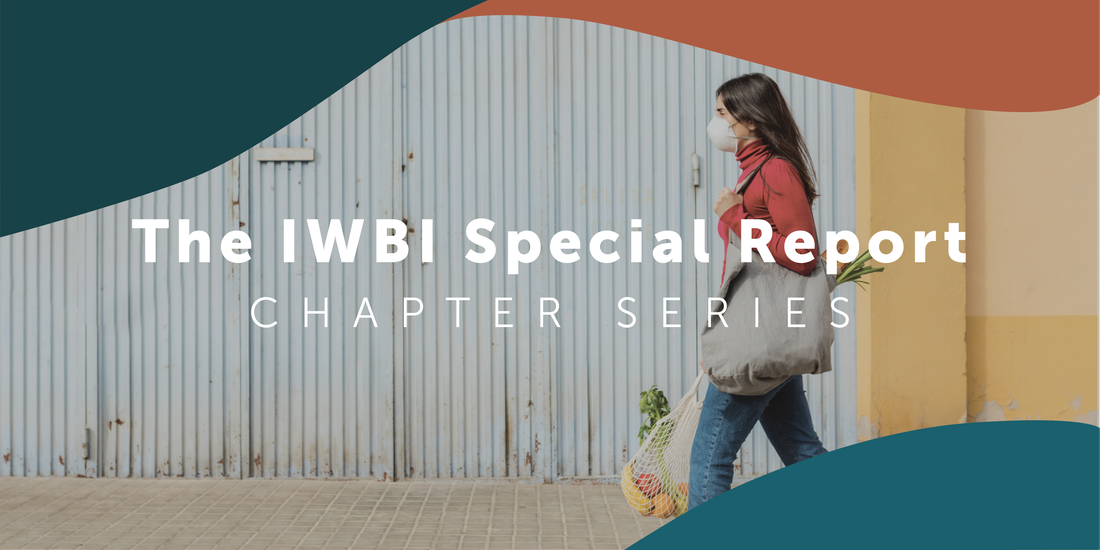The IWBI Special Report Chapter Series: “Engineering Focus Is Key to Lowering Risk, Improving Safety”

The IWBI Special Report Chapter Series: “Engineering Focus Is Key to Lowering R…
by Mona Duff
In 2021, IWBI released an in-depth report that lays out research approaches and specific operational strategies as the world continues to respond to the COVID-19 pandemic and prepares for acute health threats into the future. Prevention and Preparedness, Resilience and Recovery: An IWBI Special Report integrates proven strategies from the WELL Building Standard (WELL) and actionable insights garnered from IWBI staff and nearly 600 members of the Task Force on COVID-19 and Other Respiratory Infections.
We’ve been reposting chapters from the report to help highlight specific themes and insights. The IWBI Special Report Chapter Series continues with “Engineering Focus is Key to Lowering Risk, Improving Safety,” authored by Mona Holtkötter, CEng MCIBSE, WELL Faculty, LEED AP BD+C, Manager, Commercial, EMEA Region.
Excerpt republished from: Prevention and Preparedness, Resilience and Recovery: An IWBI Special Report
A defining element of our common pandemic experience has been a longing to get back to the places we love. Those who engineer our shared spaces are key to getting us there.
The COVID-19 pandemic has forced a reckoning with our shared spaces, even as many of them continue to sit nearly empty. Sustainability and operations teams have suddenly become their building’s de facto well-being department. They are preparing for more complete reoccupation through rigorous adherence to public health guidance—including physical distancing, proper hygiene and better ventilation. And they are joining forces with experts in engineering and design to welcome people back as safely as possible…
Excerpt: Short-term: Getting Back to Work
Engineers from every discipline—mechanical, electrical and plumbing (MEP), lighting, acoustic, structural, civil, façade and vertical transportation design—are uniquely positioned to move the conversation forward. As we move toward reoccupation of buildings, we will need to confront the challenge of HVAC systems with special consideration to optimize them to slow the spread of viruses through the air.
Leaders in engineering and design recognize their vital role in stemming the spread of COVID-19. “We need to make sure that we have proper filtration in place,” said Alessandro Bisagni, Founder and President of BEE Incorporations. “Having fresh air inside spaces is the No. 1 way to help make sure that we have a reduction in probability of virus transmission.”…
Excerpt: Long-term: Designing the Offices of the Future
Some of the design strategies that may be implemented will focus on indoor air quality. These include redesigning HVAC systems. New systems can support the fight against COVID-19 and other airborne pathogens by improving filtration and avoiding central recirculation as much as possible.3 Optimizing ventilation is another area that will receive attention. New spaces can be built with more operable windows to allow greater amounts of outside air to flow indoors, or with improved mechanical or mixed-mode ventilation systems.
Because every surface, button, dial or handle can be a potential disease transmitter,8,9 engineers can use sensors and voice activation technology to make buildings as touchless as possible—from calling the elevator to turning on the lights to flushing the toilet…
Excerpt: Engineering a Sustainable Space
Some of these ideas may give sustainability experts and activists pause. To be sure, ventilating around the clock uses more energy. But that is only one metric for measuring sustainability. As we slowly reoccupy our buildings, our economic ecosystem is rebalancing; people and planet are coming together again. One cannot be healthy if the other is not, and sick and contagious people will not be able to build a more sustainable world.
The good news is a healthy building can absolutely be a sustainable building. In fact, many WELL Certified buildings are also certified using LEED, BREAAM, Green Star or other green building certification programs. After all, sustainability is about synergy and balance. To design a truly sustainable building, engineers must prioritize not only the health of the planet, but also the people who inhabit it…
Conclusion: Designing Together
The truth is, no single action alone can sufficiently reduce the transmission of COVID-19. No amount of filtration will guarantee the protection of a person from an infected colleague sneezing or coughing near them. While engineers can aim to design a space to be as healthy as possible, employees must also be encouraged and empowered to stay home when they feel sick.
To bring our buildings back to maximum health, engineers will have to work together with facility managers, operations teams and tenants themselves to design a space that is aimed at reducing the spread of disease. This challenge calls for creative solutions and integrated design. Building teams will have to work across boundaries to combine architectural and engineering strategies with operational ones.
For one, floorplates spread six feet apart to encourage physical distancing will only slow the spread if people are well-informed about the evidence behind this practice and willing to apply it. In the same vein, facility managers can make personal protective equipment (PPE) available, but it will be effective only if information is readily available about how to wear it properly (i.e., touching only the edges of the mask to place it securely and fully over both the nose and the mouth, without frequent tucking under the chin, which can compromise the structural integrity of the mask) and dispose of it safely (i.e., removed from the ear loops carefully to avoid flinging, limiting contact with the center of the mask). These short-term responses may not necessarily become long-term design trends, but they are important considerations in this moment.
Buildings are not meant to be empty and unoccupied. They are designed to be full of people, living and working together—and the contributions of engineers are critical to getting us back inside with confidence.
Read the full section here.

